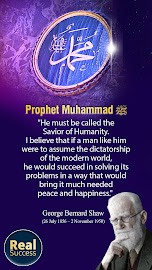Genesis And Evolution Of
Shi’a & Shia’ism
Allama Ehsan Elahi Zaheer
Language: English | Format: PDF | Pages:
210 | Size: 2 MB
Before I touch on the topic, I would like to unveil the facts which are hidden not only from the common run of people, but also from the will-informed persons. One of the facts is that ‘suppressio veri’, suppression of truth or lying is a Shia way of life. They have elevated ‘suggestio falsi’ to the level of a full-fledged faith. They have sanctified a mere tissue of lies by conferring on it the label of “Taqiyyah”; but a lie is always a le whether one presents it baldly or wraps it up in multi-coloured gift paper. To identify a self-concocted prescription with divine revelation is simply inconceivable and only a psoturemaster or a Jack pudding could conceive such an equation. No sensible or sensitive person or group of people can transform sheer flap-doodle into religious faith because it lacks both divine sanction and rational expectance. But the Shias have performed this impossible feat by turning their Punic faith into a divinely guaranteed philosophy of life which relies mainly on the projection of lies and ‘supercherie’, quackery and charlatanism, bluff and mummery. Their attitude towards “Taqiyyah” is characteristic of their whole mentality: it is a reflection of the collective Shia psyche which is suffering from a chronic moral and spiritual jaundice. The Shias observe (any one who does not observe Taqiyyah – adopts dissimulation as a way of life – is not a believer). And the painful irony of it is that, as a practical demonstration of their penchant for dissimulation, these stool-pigeons have imputed the statement to Imam Muhammad Baqir.
Hadhrat Ali and his family members protested almost invariably against the Shia propensity towards falsification and equivocation. These Imams expressed their displeasure at the Shia habit of misrepresenting facts and always complained against their clap-trap charlatanism. Kashi, one of the most distinguished Shia experts of human psychology, has related on the authority of Ibn Sanam:
“Abu Abdullah remarked that there is no doubt that we Ahl-i-Bait are in the right but we are not immune against the lies of the impostors who may impute some bouncer to us and damage our veracity by spreading humbug about us as the Prophet (peace be upon him) was the most truthful among mankind but Musailmah Kazab attributed lies to him. Similarly, after him, Hadhrat Ali was the most truthful among mankind but Abu Abdullah Hussain bin Ali. Then he mentioned Harith Shami and Banan and pointed out that they blurted lies about Ale bin Hussain. Then he cursed Mughirah bin S’aid, Bazigha, Siri, Abul Khatab, Mu’amar, Bashar-ul-Ashari, Hamza Yazidi, and S’aid Nahdi and said: we are not immune against these liars; they impute fabrications to us. May God protect us against the evil of each liar and send him to hell”.
The other fact is that he people, who roll the rosary of allegations and accusations against Hadhrat Uthman, were in fact the people who caused his martyrdom and flung open the gate of dissension among the Muslims. The majority of these traditionalists are Shias. They have magnified microscopic details and transformed Lillipution realties into Brobdignaggian monsters, and the historians have further doubled up the confusion by uncritically accepting the packet of lies handed down to them through the prejudiced traditionists. The result is that it is almost a Sisyphian labour to sort out fact from fiction and reality from phantasy. The writers and historians have followed a highly whimsical line of action; they have included every insignificant and cooked-up detail genuineness of their borrowed plumes; but they have ignored and excluded even the significant details that clash with their highly volatile priorities and scoff at their spurious thesis.
The third fact is that these traditionists have not based their perverse findings on the evidence of the direct or firsthand witnesses. They are mostly based on derivative evidence and they have reproduced mere hear-say and baseless observations without caring to test their veracity, creating a jumble of unassorted evidence. Some of the examples are glaring violations of ten years between the events and the reporters of these events. The matter will be discussed at length in the subsequent pages.
The fourth fact is that these impassioned blankety-blank defenders of their putid faith make no effort to hide their partisan stance in the projection of events. They ignore the claims of truth and side with the group of people who set ablaze the fires of dissension among the Muslims by blowing into the ash of half-dead embers. It is clear that these people are working for the mission of the rebel group and are actively engaged in keeping alive the flames of disunity flared up initially by their forefathers. Therefore it is morally binding on every person who likes to dig out truth that he should not accept their statements blindly and uncritically. He should especially find out for himself if these statements are also endorsed by more trustworthy and reliable reporters which is not unanimously supported by Abu Mikhnaf, Waqdi and the two Kalbis.
It is, however, unfortunate, that their account of companions of the Prophet (peace be upon him) is generally considered reliable through they are the worst successors of their ancestors. They were leaders of the rebels and agents of Judaism and Zoroastrianism. It is possible that they had fallen into their trap against their better judgement and had adopted their convictions as a consequence of unconscious deception. They were thoroughly steeped in their scampish beliefs. They strictly followed the strategy practised by Goebbles in the last days: they juggled and embroidered facts in such a shameless manner and they increased the volume and quantum of lies to such a stupendous degree that people almost quantum of lies to such a stupendous degree that people almost started lapping up their spoofy interpretations as unvarnished truth. They in fact crossed all bounds and limits of exaggeration and misrepresentation and out-heroded Herod in their wily and devilish misprojectiosn.
Since my ‘modus operandi’ is to rely on facts alone, and to prove my point of view on the basis of logical reasoning and substantive evidence and to quote only those sources whose authenticity is irreproachable, therefore I would like to substantiate my statements with the help of following arguments.
Abu Mikhnaf: Mohsin writes in his book “Ayyan-ush-Shia” in a chapter on Shia writers: “Abu Mikhnaf is Lut bin Yahya Azdi Ghamidi. Najashi believes that he was one of the historians of Kufah. He complied a number of books. The most noteworthy books are the ones dealing with the conquests of Syria, Iraq, Khorasan, Jamal, Safin, Nahr and Gharat and the book dealing with the murder of Hussain. Ibn Nadim in “Al- Fehrist” has recorded the comments of Ahmad bin Harith Khazzaz who thinks that Abu Mikhnaf is more will-in-formed than others about the conquest of Iraq, Madaini is more well-informed about Kharasan, India and Persia while Waqidi excels them in his grasp of facts about Hijaz and a psychological understanding of people. The information about Syria is evenly distributed among them and they can not claim any edge over one another. But it should be noted that two of these three i.e., Abu Mikhnaf and Waqidi are Shias”.
As is well known, Najashi has rated him among the Shia authors and, besides the list furnished by Mohsin, he is also supposed to have complied the following books: “Kitab-us-Saqifah”, the book of Shura, the book on the murder of Uthman, Kitab-ul- Hikmin, the murder of Amir-ul-Momini, the murder of Hussain, the murder of Hajr bin Adi, Akhbareul-Mukhtar, Akhbar-uz-Ziyat, Akhbar Muhammad bin abi Bakr and the murder of Muhammad etc. He has also mentioned that he was one of the distinguished historians and writers of Kufah. He derived a great deal of consolation from relating his traditions. He has also borrowed a number of traditions from Jafar bin Muhammad.
-
Contents:
• The Origin of Shiaism
• Shiaism and Sabai
• Shia’s Allegations on Caliph
• The Sabai’s Period
• Shia Sects
• Shia’s of Ithna-e-Ashriyya
• Ithna-e-Ashriyya and Sabai’s Belief
• Shiaism and Sabai
• Shia’s Allegations on Caliph
• The Sabai’s Period
• Shia Sects
• Shia’s of Ithna-e-Ashriyya
• Ithna-e-Ashriyya and Sabai’s Belief








































+-+alhamdulillah-library.blogspot.in.gif)


0 Comments:
Post a Comment